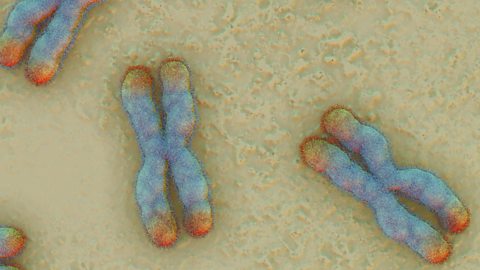Chromosomes, DNA and genes
The DNA in all of your cells is approximately two metres long, except red blood cells which have none and sperm or eggs which only have about one metre. Because it is so long it is very thin and coiled into structures called chromosomeThe structure made of DNA that codes for all the characteristics of an organism.. The chromosomes are found in the nucleusThe nucleus controls what happens inside the cell. Chromosomes are structures found in the nucleus of most cells. The plural of nucleus is nuclei. of each cell.
Human body cells each contain 23 pairs of chromosomes, half of which are from each parent. So, human gametes (eggs and sperm) each contain 23 chromosomes. When an egg is fertilised by a sperm, it becomes a cell with 23 pairs of chromosomes. This is why children resemble both their parents – half of their chromosomes and DNA come from their mother, and half from their father.

A geneThe basic unit of genetic material inherited from our parents. A gene is a section of DNA which controls part of a cell's chemistry - particularly protein production. is a section of DNA that is responsible for a characteristic like eye colour or blood group. Humans have around 20,000 genes. DNA makes up genes, which makes up chromosomes. One copy of all your chromosomes is called your genome.